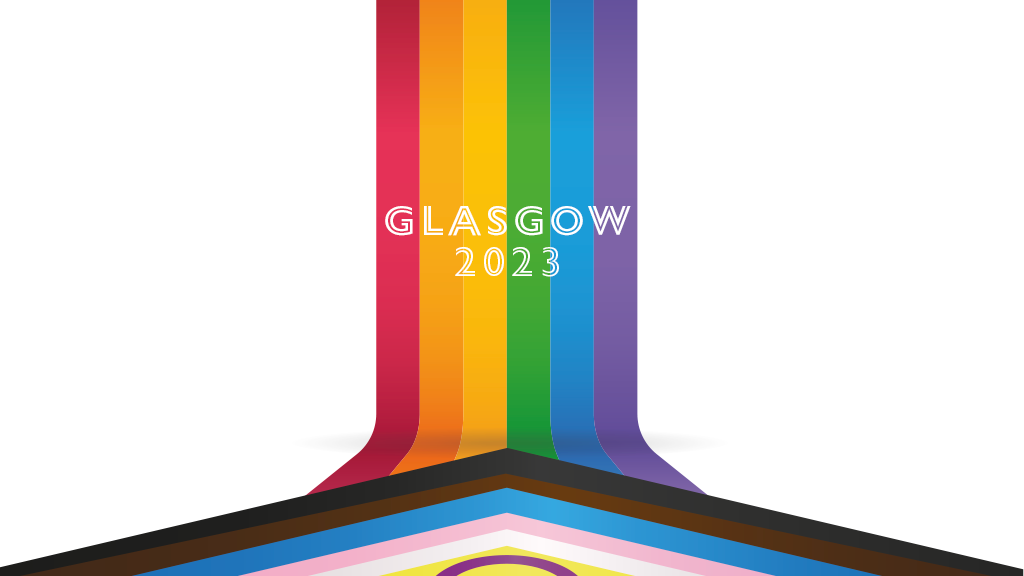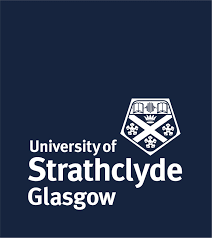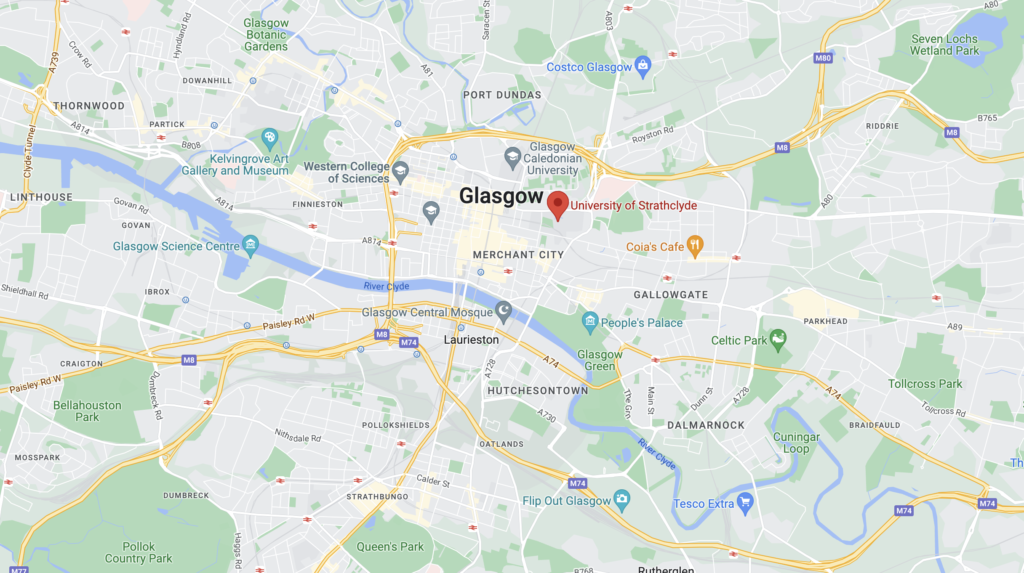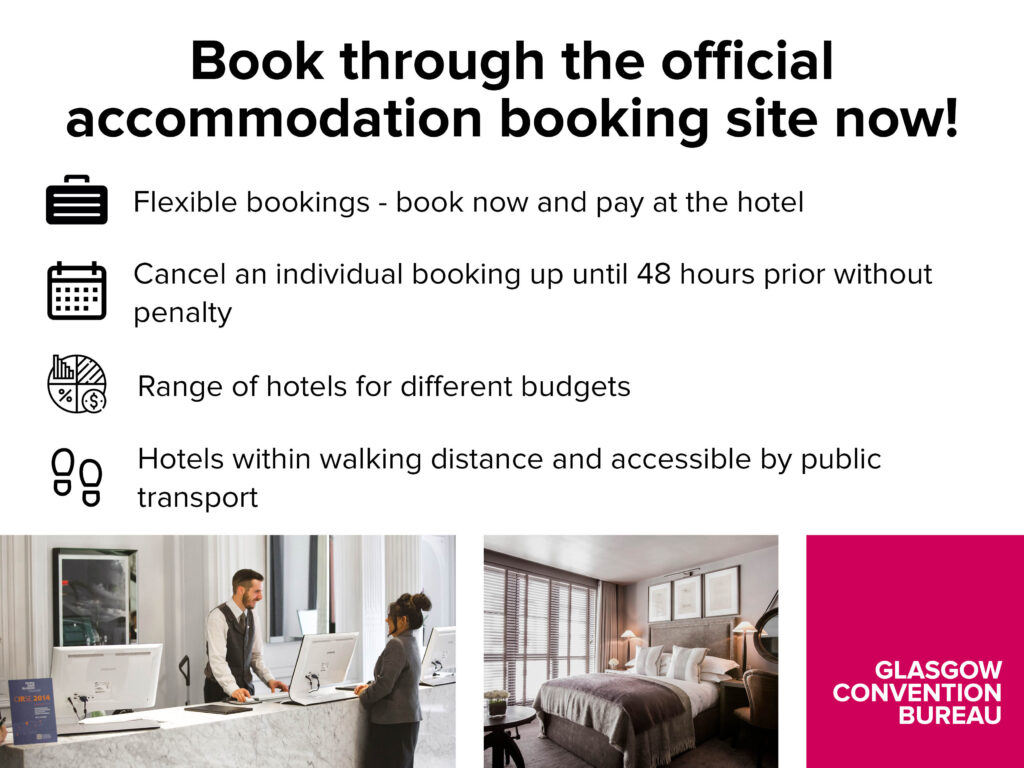
GLASGOW 2023
IN PARTNERSHIP WITH THE SCHOOL OF SOCIAL WORK AND SOCIAL POLICY, UNIVERSITY OF STRATHCLYDE

#SWSexuality23
- Registration and fees
- Guidance for presenters
- About the conference
- Getting to and around Glasglow
- Things to do/see in Glasglow
- Discounted hotel rates
- Call for abstracts
Registration
Conference registration is now open – take advantage of the early bird rate by booking your place today.
Fees
| Standard registration (closes 7 Jul 2023) | £295 |
| Unwaged students and experts by experience* | £100 |
*There are a limited number of reduced fees for unwaged students; those with lived experience.
Concessions may be available on request – email for more information
Guidance for oral presentations
Please use these guidelines to prepare for your presentation. If you need any additional support, please let us know.
If you have any co-presenters who are not listed, please let us know so we can include them in any updates.
We would be grateful if you would take a moment to let your networks and colleagues know that you are presenting! We’d love to see you tweet or post to your social media accounts about what you are presenting and how you are feeling about the conference.
Be sure to include the hashtag #SWSexuality23 and tag @SWSexuality and @StrathSWSPKE.
If you are presenting in one of our parallel sessions, please make sure you bring your presentation on a USB/External drive and upload your presentation onto the computer in the room in advance of your session.
Please check the conference programme for the time and location of your session. This will be the room where you upload your presentation.
Rooms will be open before the start of the conference each day and during breaks and lunch time.
Please note computers are automatically wiped at the end of each day so you must upload your presentation on the day you are presenting. We would encourage you to do this between 8am and 9am if possible.
There will be folders on the desktop clearly labelled for each session for convenience. We will have student ambassadors in each room to help with any issues that you might have.
In each room there will be:
A laptop, a projector and screen, VGA and HDMI connections, microphones
Please note:
Your presentation must last no longer than 15 minutes.
There are likely to be 4-5 other presenters in your session and the Chair of the session will ensure that there is time for questions and discussion after all presenters have spoken.
Please ensure that your presentation is prepared in advance and that your PowerPoint slides are clear and accessible.
We recommend:
- Using clear fonts such as Arial;
- Reducing the use of colourful backgrounds such as red and where possible use black text;
- Incorporating different presentation styles into your presentation such as diagrams, pictures and verbal explanations; and
- Using accessible language where possible.
All sessions will be busy, and Chairs will have to keep people strictly to time.
It is important therefore that your presentation is well structured and organised and that you are confident that you can cover all your material within 15 minutes.
During the session:
- Describe pertinent visuals
- Explain acronyms
- Give the audience time to digest the information
After the session
- If appropriate share contact details so that delegates can get in touch if they have questions/ further discussion
Please note that our intention is to create a safe space for discussion and debate and that we always encourage respectful debate and dialogue.
Equality, diversity and inclusion are at the heart of this event and we aim to be open, transparent, inclusive, democratic and free from discrimination to meet the needs of everyone.
We aim to do this by:
- Communicating our commitment to equality, diversity and inclusion clearly and actively promoting this;
- Challenging discrimination based on age, disability, gender, race, religion or belief, sex, sexual orientation;
- Ensuring legislation and policy requirements are incorporated into our working practices.
Poster presentations
- If you have a poster to present, please make sure you bring this with you to the conference venue;
- On the day there will be poster boards and you will be given information on how to display your poster.
- There are dedicated times on the programme for posters exhibition and during this time we ask you to stand next to your poster so that you can answer any questions.
Guidance for Conference delegates on Poster Presentations
A poster presentation affords certain strong advantages in communicating the main messages of your contribution for example, the outcomes of your research, policy or practice initiative for example:
- Posters can be viewed for a substantial period during the day it is displayed
- Any data, graphics and messages on posters can be made available
- The poster allows you to more personally interact with the people who are interested in your contribution
- A poster attracts an audience that is really interested in your work
The poster presentations will be organised in sessions, at least a half-day, usually a full day and where possible can be organised within a theme.
Your poster will be displayed in the common foyer area where conference delegates will be taking refreshments and food or taking a break in between sessions.
In advance of the conference, you will be told:
- What day you should display your poster – this will be in the conference programme
- Where to display your poster – you will be allocated a specific numbered ‘poster board’ and you should leave sufficient time at the beginning and end of the day to mount your poster and take it down.
- Poster viewing time will be allocated in the programme to encourage delegates to take time to view the posters. Authors should make sure that they are in attendance by their poster during allocated poster viewing.
Preparing a poster
The standard format of a poster usually follows that of an oral scientific presentation and can include.
Introduction
Methods
Results
Conclusions
Recommendations
Please re-read the abstract that was accepted and make sure that you follow the same information provided there. (Do not include your abstract on your poster as this will be in the conference programme).
A poster, like an oral presentation, cannot (and should not) contain all information you have on the topic. Posters typically should stimulate interest rather than provide a detailed presentation. If all text is kept to a minimum (800-1000 words maximum), a person should fully read your poster in less than 10 minutes. Since there will be many other posters, you must make sure your poster is interesting and visually appealing if you hope to attract viewers.
Size of your poster
This should be in Portrait mode
A1 Size 23.4 inches (59.4 cm) wide x 33.1 inches (84.1 cm) high.
General guidelines:
–The relevance of the poster to the topic should be very apparent to viewers.
– Think of the raw layout of your poster beforehand. For example, place the title at the top. Start with the Introduction at the upper left, finish with the recommendations at the lower right, with methods and results filling the central space.
– Use short sentences, simple words, and bullets to illustrate your points.
– Text should be broken up by including graphics or photos.
– Self-explanatory graphics should dominate the poster. The success of a poster directly relates to the clarity of your illustrations and tables!
– Avoid using jargon, acronyms, or unusual abbreviations.
– Use a non-serif font (Arial) for the poster.
– The poster (text and graphics) should be easily readable from about 2 metres distance. As a rule of thumb Arial >24 points). The titles should be in large fonts (e.g. Arial >80 points)
If possible institute logos or affiliations should be minimised in size and put in the lower corner of the poster, or, alternatively, next to the title.
- Introduction: Get your viewer interested in the issue or question while using the absolute minimum of background information and definitions. Put the objectives of your contribution at the end of your introduction.
- Methods: Be short, but precise. For example, what study design you used and your study population.
- Results: Briefly provide descriptive results. Any tables and graphs should stand on their own.
– A minimal amount of text materials should supplement the graphic materials.
– Use areas of empty space between poster elements to differentiate and accentuate the elements of your poster.
– Use colours for emphasis, but do not overuse (2-3 colours are usually enough).
– Graphics and tables should have a complete title and legend.
- Conclusion and recommendations: Comment on the main results and discuss why they are conclusive and interesting. Discuss limitations. What are your recommendations?
- Acknowledgements/further information: Thank individuals for specific contributions to the project; mention who has provided funding. Provide your e-mail address for further information.
Making the poster
- Preparing a poster takes time. Plan for a minimum of one week.
- Usually, presentation software such as PowerPoint is used. Format your PowerPoint slide to the size you’ll like to have it printed (ex 90×130 cm) by using the menu data -> format page. You can insert your text and graphics directly on that slide or copy-paste it from a Word document or a PowerPoint slide.
- Print the poster in an A4 format to check for layout, colours, font size and spelling errors before printing it in large size.
- After the poster is printed in large format, changes are no longer possible.
- It is often useful to make a handout of your poster for distribution during the poster session
Finally, include your contact details on the poster and handout so that people can contact you after the conference is over.
Transport your poster in a tube to make sure it keeps well during travel.
The Scientific Committee will judge posters and award a prize for the best two posters – so Good Luck
5th International Sexuality and Social Work Conference
Everyday gender and sexuality: justice, rights and activism in social work and helping professions
18-19 JULY 2023 – UNIVERSITY OF STRATHCLYDE, GLASGOW
Venue
The conference will take in the Technology and Innovation Centre (TIC) at the University of Strathclyde in Glasgow, Scotland, UK.
99 George Street
Glasgow
G1 1RD
For more information about the venue and how to get there, please visit https://www.strath.ac.uk/conferencingandevents/attendinganevent.
Air
Glasgow has 3 international airports nearby, with connections across the UK and the world:
- Glasgow Airport is the closest airport to the city centre. Catch the express bus service from outside the terminal and arrive in Glasgow in around 15 minutes. Visit glasgowairport.com for more information.
- Glasgow Prestwick Airport is 32 miles (51km) from Glasgow. It is very accessible with train and bus services to the city centre. Find out more at glasgowprestwick.com.
- Edinburgh Airport is 39 miles (63km) from Glasgow. There is a direct bus service from the airport to Glasgow’s Buchanan Bus Station which takes around 1 hour. Head to edinburghairport.com for more information.
Rail
Glasgow is well connected by train from across the UK by 2 main stations:
- Glasgow Central Station links Glasgow to the south
- Glasgow Queen Street Station operates routes mainly to Edinburgh and the north
To book tickets, visit scotrail.co.uk, tpexpress.co.uk and avantiwestcoast.co.uk. To view all available routes from across the UK, visit thetrainline.com.
If you’re planning a trip from London to Glasgow, check out the Caledonian Sleeper’s website and arrive refreshed after a comfortable overnight journey.
Road
Scotland has an extensive motorway road network. Glasgow is linked to the following places:
- Edinburgh with the M8
- England on the M74
- Stirling with the M80
- West coast of Scotland with the M77
For more information on Scotland’s road network, visit the Transport Scotland website.
Sea
You can travel to Scotland by ferry from the major ports of Belfast and Larne in Northern Ireland. Ferries dock at Cairnryan in the southwest of Scotland, with a bus service taking passengers to the city centre in 2 hours 10 minutes.
You can also travel from mainland Europe. You can arrive in either:
- Hull in the northeast of England where it’s around a 4 hours drive to the Scottish border.
- Newcastle, which is around a 2 hours 40 minutes drive from Glasgow.
Find out more information at stenaline.co.uk and dfds.com.
Getting around Glasgow
On foot
Glasgow is a very walkable city, especially the city centre, so you can easily explore it on foot whilst taking in the beautiful buildings and architecture around you – don’t forget to ‘look up’ when you’re in the city.
Get your bearings by visiting our neighbourhood guides.
Bicycle
Glasgow is home to a fantastic cycle hire scheme, operated by OVO Bikes. Visit OVO Bikes website to find out how it works.
For ideas of the best routes in the city and surrounding areas to follow by bike, check out the Sustrans website.
Subway
The subway is one of the easiest ways to get around the city centre, west end and southside of Glasgow. Running every 4 minutes at peak times, it takes just 24 minutes to complete a circuit of the 15 stations.
You can either buy a single ticket or, if you’re here for a few days, you might want to get a Subway Smartcard, which offers the best fares and you can top up as you go. Visit the Strathclyde Partnership for Transport (SPT) website for more information.
Train
Glasgow Central Station links Glasgow by rail to the south, with Glasgow Queen Street Station operating routes mainly to Edinburgh and the north. Visit the ScotRail website for information on all routes and timetables.
Need to travel between Central Station and Queen Street Station? Check out ScotRail’s handy walking routes or bus link service at scotrail.co.uk.
A Roundabout ticket gives one-day unlimited travel on ScotRail and Subway services to over 110 stations in the Greater Glasgow area. More information on the Roundabout ticket can be found at spt.co.uk.
Bus
First Bus Glasgow operates over 80 routes across the city and has a variety of tickets to choose from, including day tickets allowing unlimited travel in your selected area all day, or a weekly ticket if you’re staying here longer. For the cheapest prices, download the First Bus App where you can buy and store tickets on your phone, plan your journey in advance and track the arrival of your next bus.
First Bus also operate an express service between the city centre and Glasgow Airport with a journey time of around 15 minutes. Visit glasgowairport.com for more information.
Taxi
Glasgow’s taxi drivers are some of the friendliest in the world. Glasgow Taxis operate 5 and 6-seater cabs in and around the city. If their yellow light is on, they can be flagged down on the street, or alternatively, call +44 (0) 141 429 70 70 to book. Check out the Glasgow Taxis website for more information.

©University of Strathclyde
Glasgow tourist information
Visit Glasgow’s tourist information website: https://glasgowconventionbureau.com/plan-your-meeting/meeting-planners-toolkit/glasgow-tourist-information.
City Sightseeing Bus
The City Sightseeing Glasgow open-top bus tour is one of the most convenient ways to visit Glasgow’s top tourist attractions and iconic sights. Stopping at the People’s Palace, Glasgow Cathedral, Riverside Museum, Kelvingrove Art Gallery and Museum and The Clydeside Distillery, the hop-on-hop-off service is a fun way to enjoy the city.
The complete tour lasts approximately 1 hour and 25 minutes. Full accessibility for wheelchair users is available on all tours, with one dedicated wheelchair space available on the lower deck of each bus.
Tickets are available from the City Sightseeing Glasgow website, the driver or pavement staff and are valid for 1 or 2 days.
Other links
Active Glasgow HERE
Auchentoshan Distillery HERE
Glengoyne Distillery HERE
Clydeside Distillery HERE
Discover Scotland HERE
Rabbies HERE
Timberbush HERE
City Sightseeing HERE
Cruise Loch Lomond HERE
Eat Walk Glasgow HERE
Glasgow Food and Drink Tour HERE
Walking Tours in Glasgow HERE
Friends of Glasgow Necropolis HERE
Mackintosh at the Willow HERE
The Tall Ship HERE
Glasgow Convention Bureau is the official accommodation provider for the conference and has negotiated specially discounted rates with a wide range of hotels.
Accommodation will be sold on a first-come, first-served basis and the published rates will be available until 6 June 2023.
Book now to avoid disappointment and secure your discounted rate!
When your room is reserved you will receive an immediate confirmation by email. Breakfast is included unless otherwise stated.
For group bookings of 10 rooms or more or other accommodation enquiries please email [email protected] or call us on 0141 566 0821 / 0820 during office hours. **No telephone bookings.**
BOOK NOW
If you need to extend your stay, please book the nights available in the portal and once you have your booking reference number please email this along with your requirements to [email protected] – the team will then contact your hotel to secure the additional night(s) at the conference rate, if available.
For any accommodation enquiries (no bookings) please email [email protected]
The call for abstracts is now closed.
Please follow the group to be notified of future calls for abstracts. There is still time to book your place and join us in Glasgow.
Key dates
| Call for abstracts opens: | 5 September 2022 |
| Call for abstracts closes: | 14 November 2022 |
| Abstract notification: | 9 December 2022 |
We invite papers on the themes of (but not limited to):
- Every day and lived gender and sexuality
- Justice and rights
- Activism
- Reproductive justice
- Conversion therapy
- LGBTQ+
- Intersectional gender and sexuality that could include: racism, ageism, class issues, neurodiversity etc.
- Disability
- Gender and sexuality across the Lifespan (children and families)
- Education and training
- Health and wellbeing
- Epistemologies
- Systems and state responses to gender and sexuality
Abstract submission
Click on this link to submit your abstract: https://easychair.org/cfp/SWSexuality23.
Please note that you will need to create an account first with Easy Chair and confirm your email address by clicking on the link sent to you. Please make sure you read and refer to the abstract instructions on the submission page.
Stay informed
Join our Sexuality & Social Work Group to stay informed about our conference. Join for free by visiting:
www.sexualityandsocialwork.com/join.



